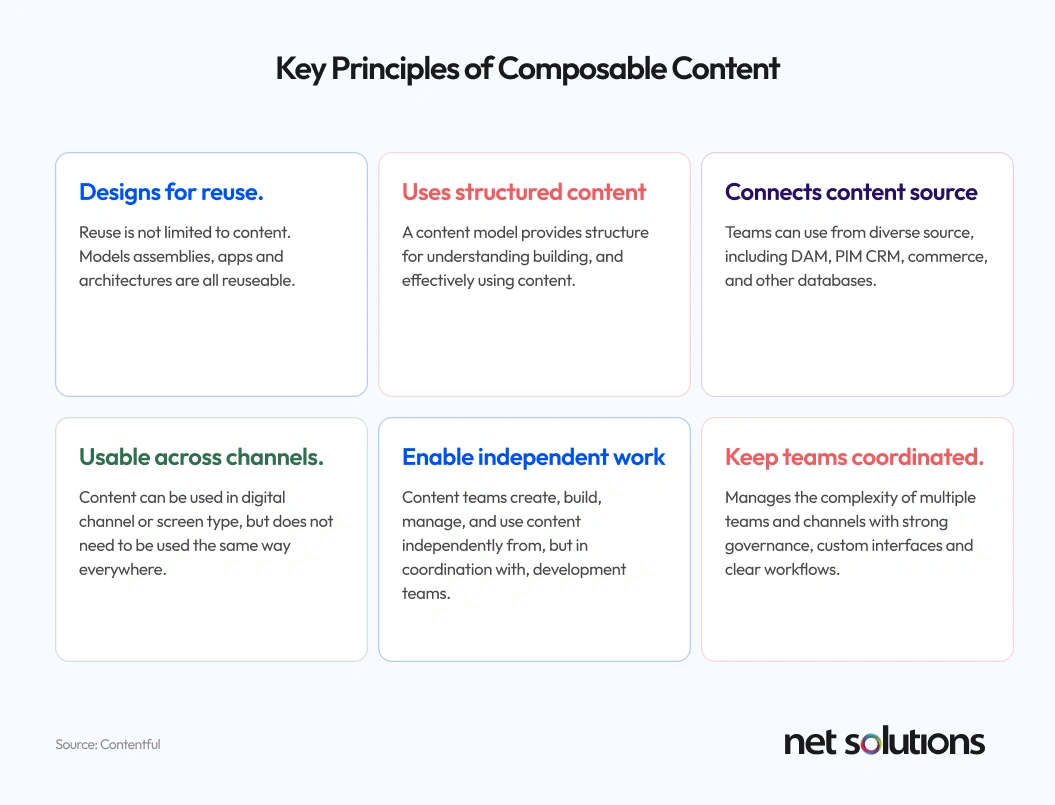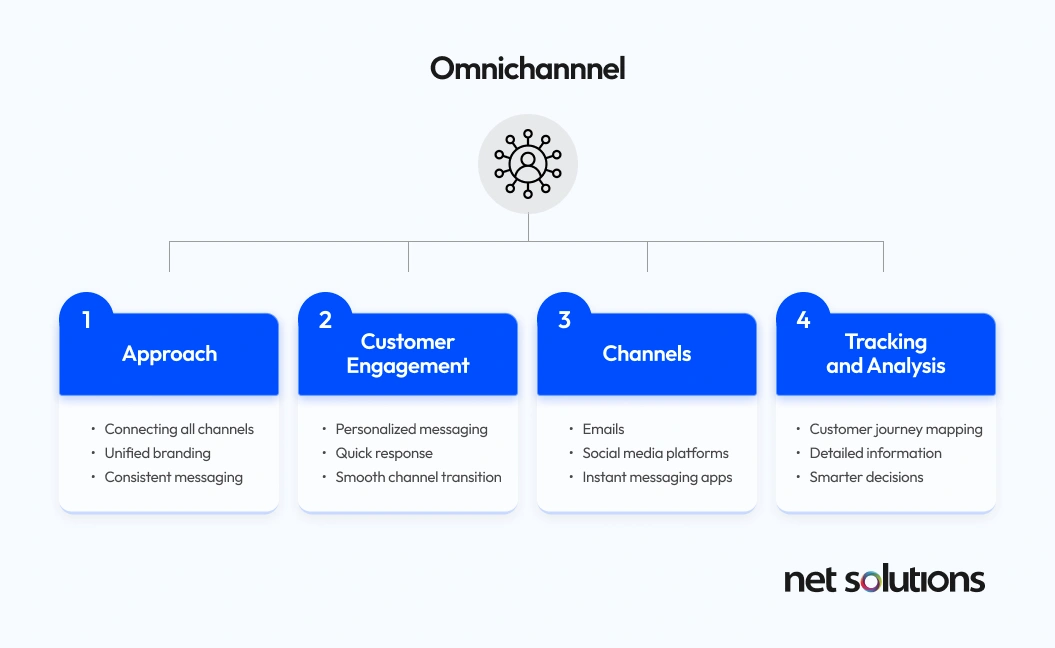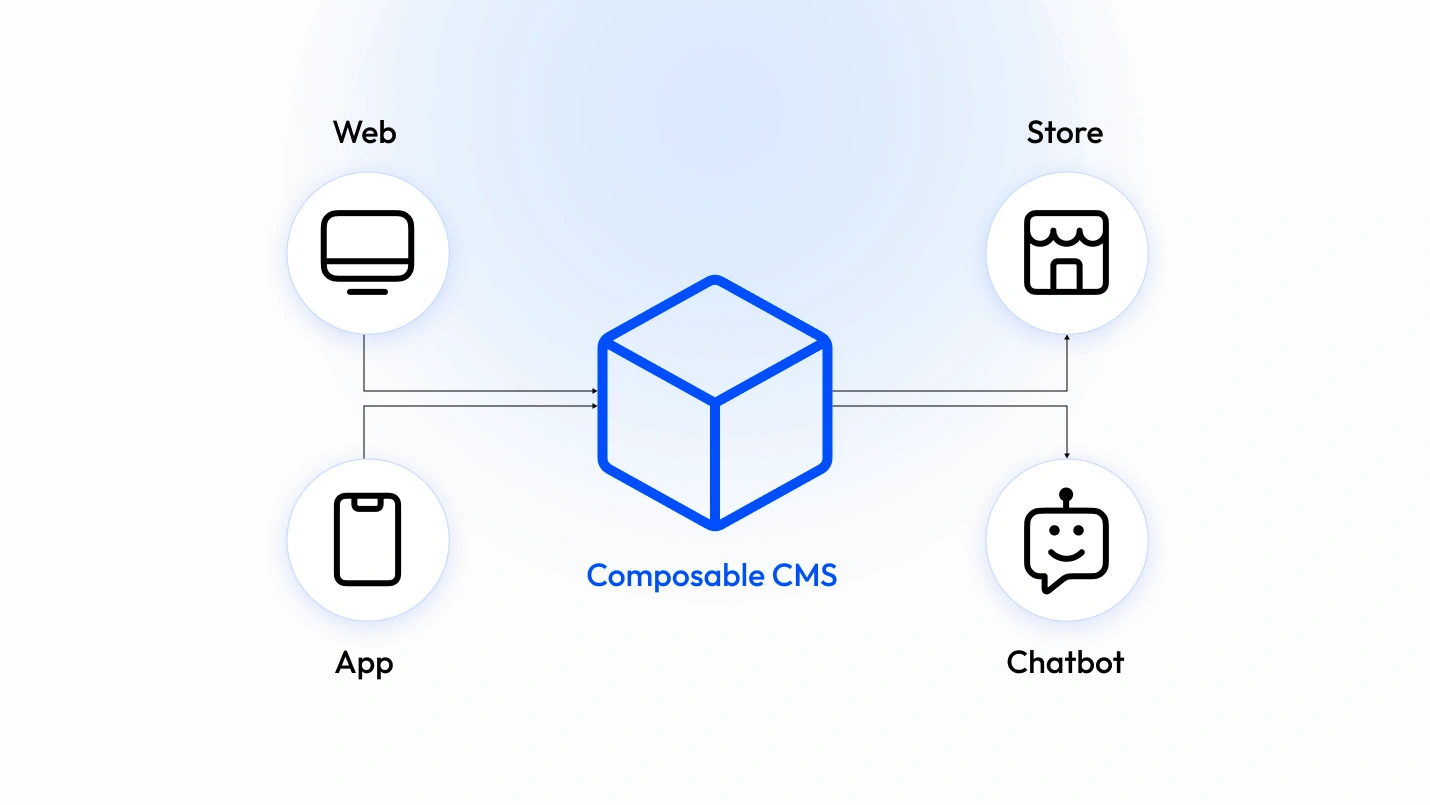In a market defined by shifting expectations and fractured customer journeys, businesses face a fundamental challenge: content is everywhere, yet rarely where it’s needed, when it’s needed. Fragmented teams, siloed delivery channels, and inconsistent brand messaging continue to throttle digital performance, even in organizations already equipped with modern content tools.
At the heart of this disconnect is the growing complexity of omnichannel content delivery. Consumers expect seamless continuity across platforms, languages, and contexts, but many enterprises are still managing content as if it were 2010: distributing it page-by-page, channel-by-channel, team-by-team.
In our recent webinar on “How Composable CMS Powers Omnichannel Presence,” Mark Demeny, Composable Software Expert and Tech Analyst at MACH Alliance, joined Ben Thomson, CRO and Strategy Consultant, to unpack what it takes to succeed in today’s digital reality, and why content operations need a rethink.
Content Chaos Is a Symptom, Not the Root Cause
While many teams instinctively attribute inefficiencies to tooling limitations, Mark challenged that assumption early in the conversation. “There’s usually a lot of value that they can get out of what they have now, if they think about things in a slightly different way,” he noted.
Instead of defaulting to replacing their CMS, organizations must first examine how content is structured, modeled, and activated across internal teams and digital touchpoints. This shift, from project-based thinking to system design thinking, is the foundation of scalable content operations.
The result? A move from campaign fire drills to composable content ecosystems.

Breaking Silos: From Multichannel to Omnichannel
The distinction between multichannel and omnichannel isn’t just semantic – it’s operational. “A multi-channel experience is tricky enough,” said Mark, “but a true omnichannel experience is harder to do.” It requires systems, teams, and content to be not just replicated across channels, but orchestrated between them.
He offered the example of Hilton’s digital check-in experience, where the customer can book online, receive a digital key on their app, and go straight to their room without visiting the front desk. “That experience is a lot of work to do. To link all those systems in a true omnichannel experience… you’re not going to do that for the local ice cream shop,” he added.
True omnichannel delivery involves more than republishing; it demands dynamic handoffs, customer data continuity, and cross-system orchestration.

Structured Content Is No Longer Optional
One of the most actionable insights from the discussion was the emphasis on structured content as the backbone of omnichannel scalability. Demeny advised looking at widely adopted standards like schema.org and JSON-LD as starting points for how content should be structured, not just for search engines but for large language models as well.
“LLMs can look at web content and scrape it, and they do a decent job of interpreting it. But if it’s in a structured fashion, they don’t have to interpret it at all. It just works,” he said.
This isn’t just about SEO or findability. It’s about building content that performs across every channel, from web and mobile to AI-driven interfaces and search engines.
AI Is Not a Shortcut. It Amplifies the Flaws
The increasing reliance on AI for content creation and delivery doesn’t fix broken workflows. It exposes them.
“People think, oh, we can just throw AI at something, and especially a process that’s broken today, and it’ll fix it. That’s the exact opposite,” Demeny said. “AI is kind of like having a sea of really stupid interns. They’ll do the task, but only if you describe it clearly”. This reinforces the need for structured content and clearly defined content operations. Without that, AI is more likely to accelerate inconsistencies than eliminate them.
Localized Complexity Requires Centralized Governance
For businesses operating in multiple regions or languages, content governance becomes even more complex. Demeny outlined the layers of localization, from basic translation to adapting messaging for cultural nuance and regulatory compliance.
He pointed out that some countries are comfortable consuming content in English, while others demand not just local language but local ownership of brand voice and messaging. “What I’ve seen work well is a push-pull model,” he explained. “Central teams offer messaging and assets, and regional teams choose what to adopt or adapt. And having a system that maintains those relationships, where content is a copy of another but stays connected, is key”.
This is where composable CMS platforms shine: they offer the flexibility to extend content models, track relationships, and automate notifications across distributed teams and markets.
Efficiency Isn’t Just Output, It’s Experience
In high-functioning organizations, content creation is not a pain point. It’s a performance advantage.
“If you’re quoting content deployment in multiple days or weeks, or if content authors are constantly complaining about usability, you’re not just slow, you’re operating inefficiently,” said Demeny.
And the cost of inefficiency is steep. It demotivates teams, generates internal resistance, and can ultimately drive talent out. “If your internal teams are unhappy using the tools you’re providing, those tools start to acquire a bad reputation,” he warned. “Eventually, it becomes more of a political or emotional decision to replace them than a logical one”.
Composable CMS platforms address this by offering customizable workflows, intuitive authoring experiences, and role-specific UI flexibility, without locking teams into a fixed front-end or content structure.
Team Design Matters More Than Stack Choice
Organizations often overestimate what small, under-resourced teams can accomplish. “You need to understand the operational model you’re aiming for,” Demeny explained. “If you’re doing a lot of experimentation and personalization, then having that expertise in-house is critical. But if not, it might make more sense to bring in specialists who have the time and expertise to execute well”.
He drew an analogy to Formula One: “To run a high-performance operation, you need more than a great car, you need a pit crew of specialists, from architects to digital owners, who know exactly what to optimize and how fast to go”.
Measuring Success: What Good Looks Like
For teams questioning whether their content system is working as it should, Demeny offered a stark benchmark: “We had a team of six people managing a multimillion-dollar channel. Content went live instantly. The company that acquired us had 200 people, and it took them two weeks to publish content. And they were proud of that”.
True efficiency comes from alignment between content modeling, team structure, and system flexibility. When those elements click, the result is not just faster publishing but better customer experiences, and a happier, more empowered workforce.
Final Thought
Composable architecture is not just about swapping out tools. It’s a rethinking of how content is structured, governed, and delivered across every experience layer of the business. As Mark summarized, “Those organizations that get this right are selling a lot of stuff, and their teams are happier doing it.” You can watch the conversation between Mark and Ben on our on-demand webinar link here.



